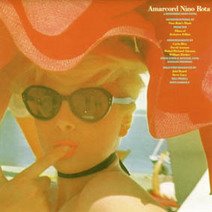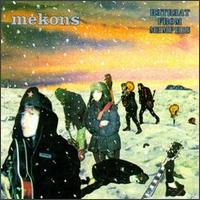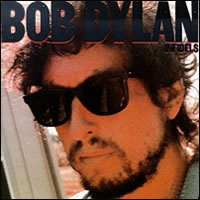VARIOUS ARTISTS Amarcord Nino Rota
 Hannibal HNBL 9301 (1981)
Hannibal HNBL 9301 (1981)Amarcord Nino Rota (which translates as "I Remember Nino Rota") is a tribute to the Italian composer/film scorer who provided the music for every single one of Federico Fellini's films (including 8 1/2, La Dolce Vita, and Amarcord). It was produced by Hal Willner (whose That's the Way I Feel Now: A Tribute to Thelonious Monk was reviewed by yours truly here) and features a stellar cast of jazz players.
Listening to Rota's music, it's not hard to understand why he and Fellini had such a lengthy (29 years!) and harmonious working relationship; Rota captures perfectly the blend of whimsy and longing found in most of Fellini's films, and his music mirrors the carnival-like atmosphere of these stories. The Carla Bley Band's take on "8 1/2" is a perfect example of this; the piece shifts rapidly through several moods and textures and is able to tell a story without the aid of visuals. Guitarist Bill Frisell contributes a hauntingly evocative "Juliet of the Spirits", and soprano saxophonist Steve Lacy's solo reading of "Roma" is sublimely lyrical. The David Amram Quintet's version of "Satyricon" captures the fevered, primal nature of the film in its poundingly insistent rhythms, and "Medley: The White Sheik, I Vitelloni, Il Bidone, The Nights of Cabiria" collects several of Rota's themes in a cool-jazz setting featuring Wynton and Branford Marsalis. Rounding out the album are Jaki Byard's calm but subtly emotional readings of "Amarcord" and "La Strada", which open and close the record, respectively.
Considered by many to be the first "modern" "tribute" album, Amarcord Nino Rota is a generously-sized LP (nearly 57 minutes on a single record) and is worth searching for in any format (it's available on CD, but appears to be out of print (and pricey... I feel very lucky to have secured my copy for $1.99!)).





